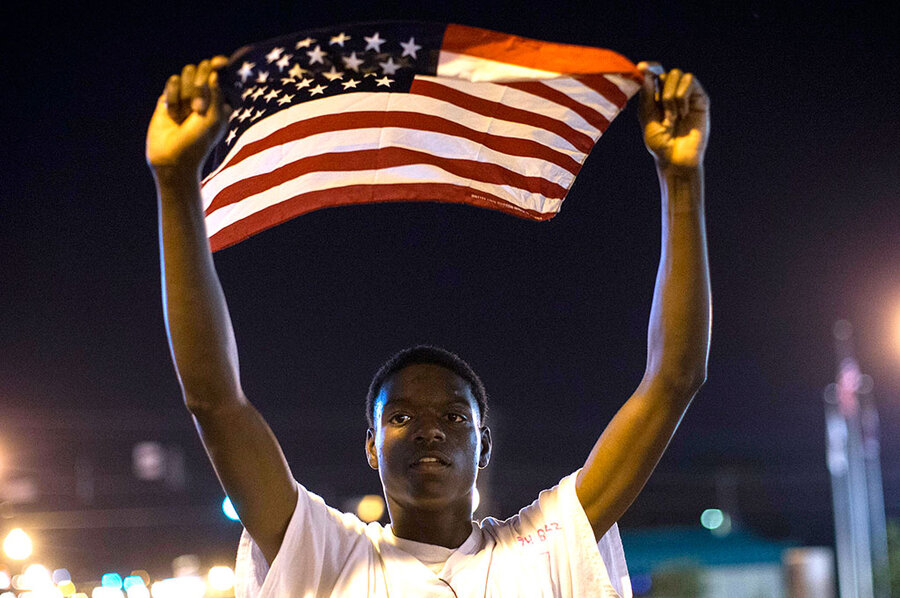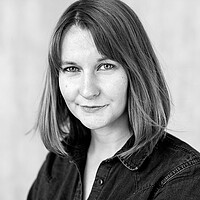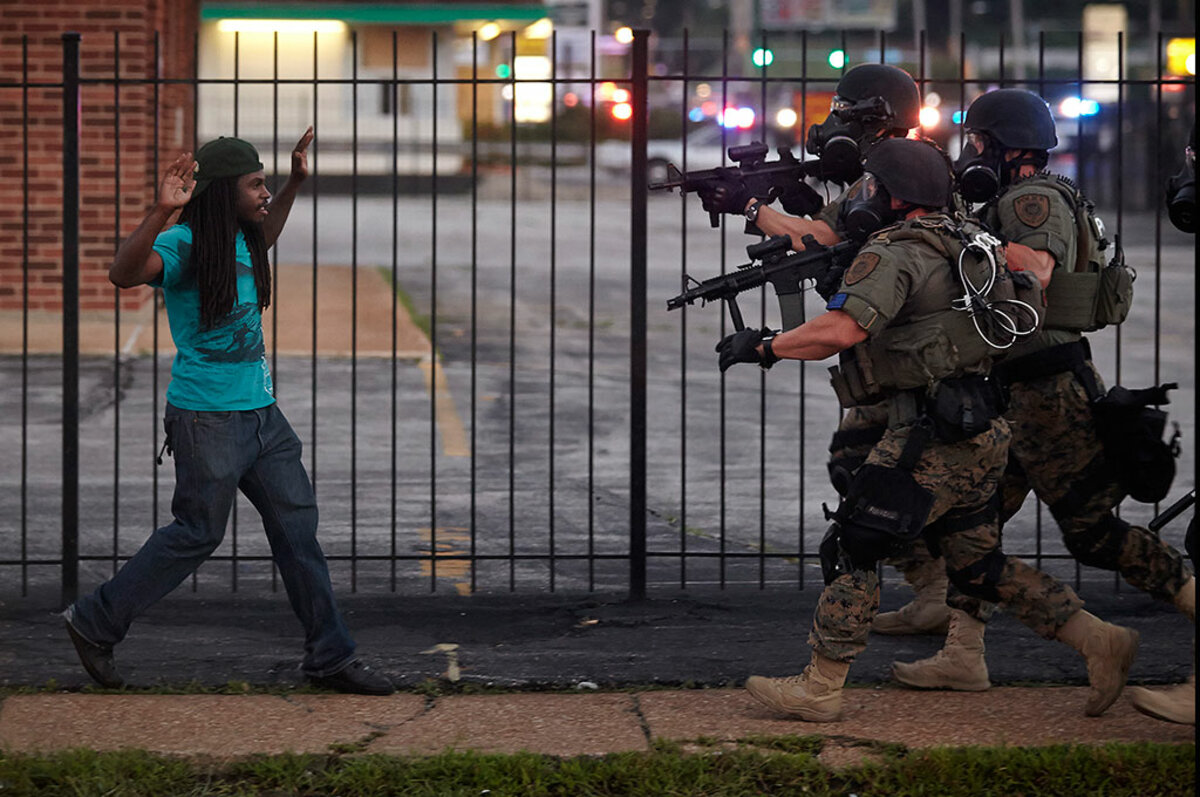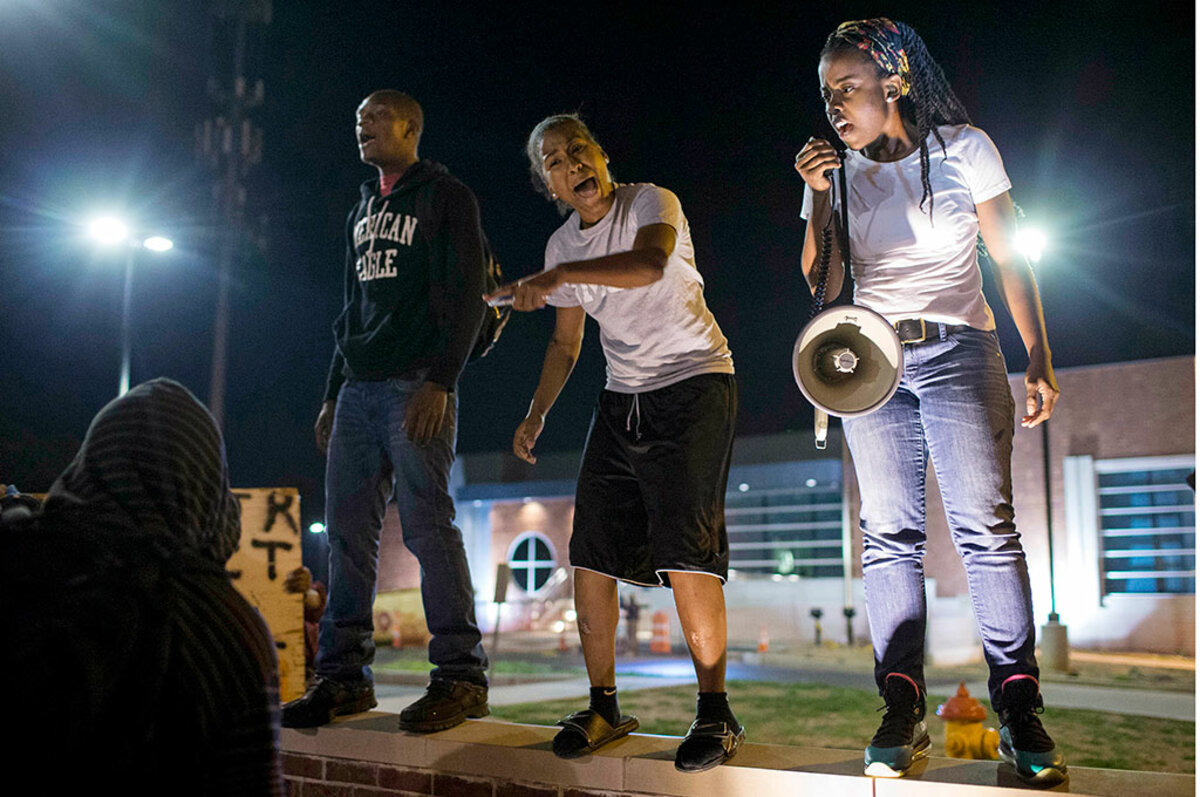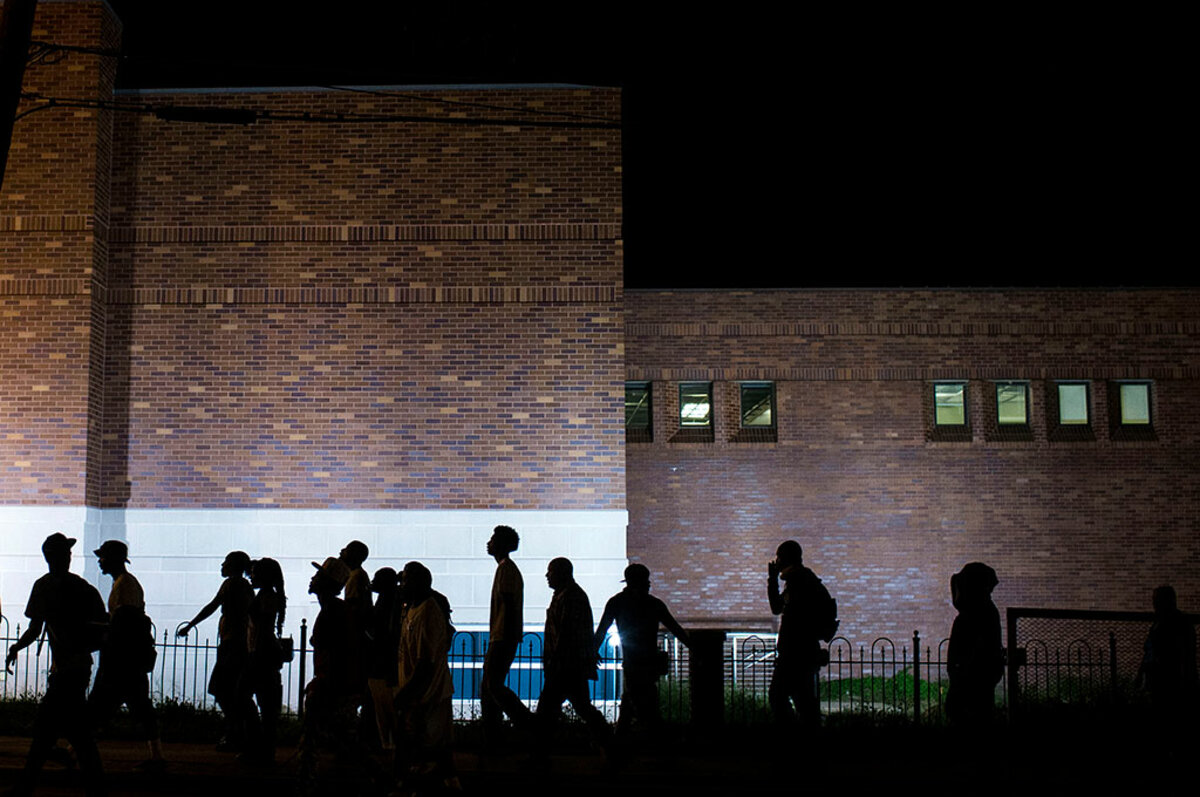Looking back on Ferguson
Loading...
| Boston
Whitney Curtis’s images of the escalating tension between demonstrators and police over the shooting of Michael Brown in Ferguson, Mo., were seen all over the news as events unfolded there in August, 2014. As a freelance photographer based in St. Louis, she had a well-informed view of what was happening in her backyard. I asked her about lessons learned from her coverage both in Ferguson and abroad.
Ann Hermes: You have worked extensively in the Midwest as well as in Uganda, Haiti, and elsewhere. Tell me about your approach to different places. Are there more similarities or differences in how you cover stories at home and abroad?
Whitney Curtis: I find that the basics of storytelling are the same whether I’m five miles or 5,000 miles from home…. I try my best to accurately portray the story I’m documenting and to have the greatest amount of empathy for the people I’m photographing.
Most of the time when I’m abroad working on projects I hire a “fixer” – typically a local journalist who can act as a guide, translator, and driver. Oftentimes I’m dependent on the fixer to help me gain access. A fixer is also there to add to the pre-travel research I’ve completed by helping my understanding of the local culture.
Without the language and cultural barrier, it’s usually easier for me to build rapport with subjects when covering stories at home. Making a connection with most people I photograph is much more simple when I'm in the US.
Hermes: You are a resident of St. Louis and covered events in Ferguson. What was your reaction to such events happening so close to home?
Curtis: The events following Michael Brown’s death startled the St. Louis region, but I was not surprised by the community’s response to the actions of the police.
The segregation in the metro area was one of the first things I noticed when moving to the city eight years ago. However, it's something I rarely heard discussed – at least not in my social circles.
I believe the police have a difficult, dangerous, and often thankless job, but most do their best every day. The frustrations of African-Americans in the city and county had been growing due to the long-term injustice in countless ways, but especially by the court system in many smaller municipalities in the St. Louis area. [The courts used] fines and fees solely as a means of generating revenue. It was an issue brewing under the surface for many years, and it took this one tragic event for emotions to erupt.
Hermes: Was there anything that took you by surprise in Ferguson?
Curtis: During the first few weeks I had numerous residents thank me for being there and covering the story in Ferguson…. It’s rare to receive that kind of gratitude for simply doing my job.
Hermes: Did your coverage deepen your own understanding of St. Louis or change your view of it as a photographer and a resident?
Curtis: The events haven’t changed my view of the city. As a white woman, it has deepened my understanding of the racial history of the city. By spending so much time in Ferguson and the surrounding communities in North St. Louis County I have a greater empathy for the social injustices and biases affecting the African American community and low-income residents in all facets of their life – education, housing, public health, and law enforcement.
One of the most important things I’ve taken away from covering this story is a re-emphasis on how we as journalists need to be sensitive to story subjects and the community we’re covering. It was distressing watching members of the national and international media parachute in to cover the story and then quickly leave when things calmed down. I saw the effect our coverage of the events had on the local community. The impertinent attitudes of some members of the media toward the community I live in reminded me that I need to carry the utmost empathy the next time I’m covering a story away from home. Every community I land in should be treated like my own.




